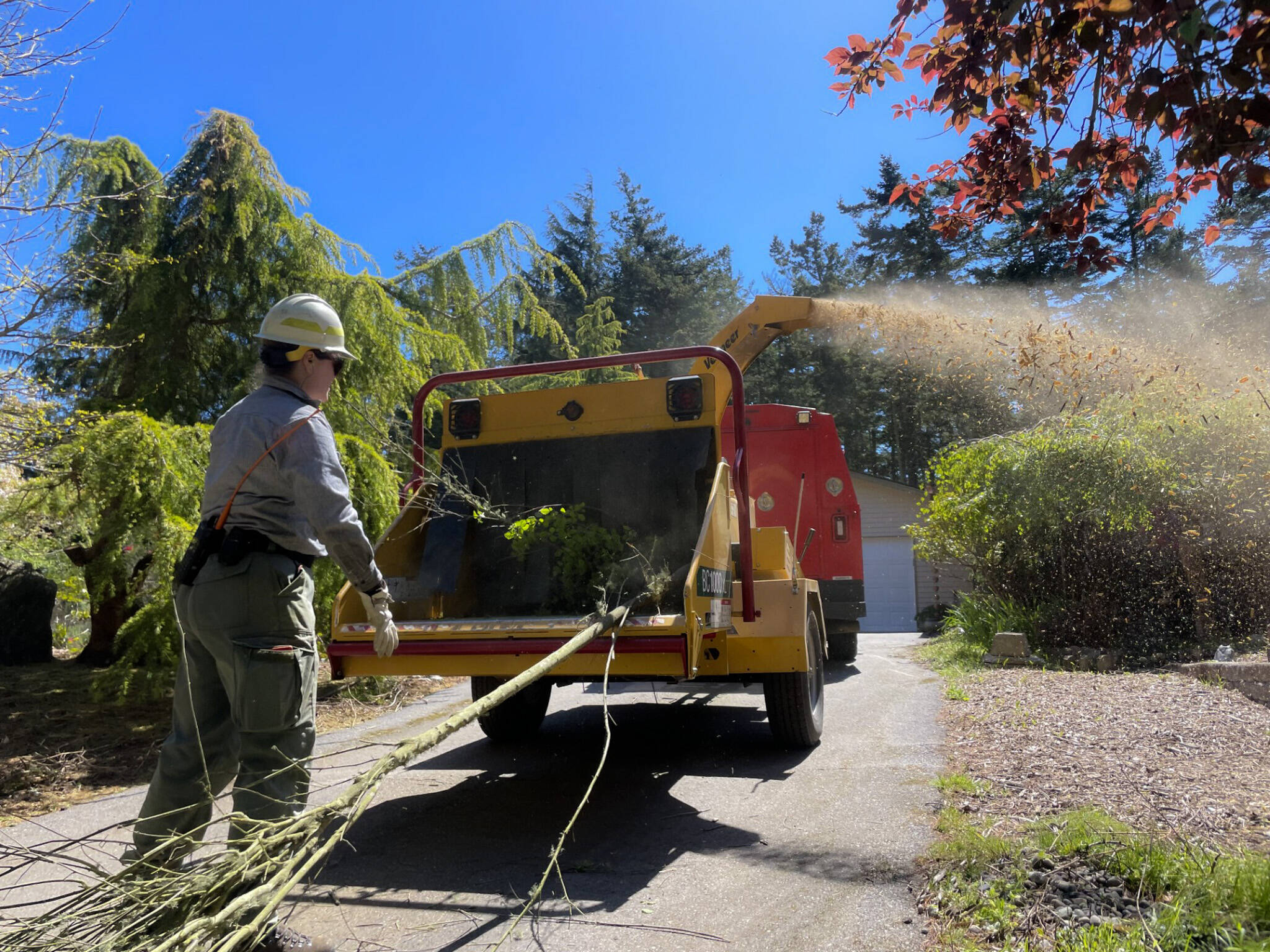This year, residents in the Pondilla Estates near Fort Ebey State Park received a grant from the Department of Natural Resources to be proactive against wildfires.
The Firewise Micro grant supports “firewise” communities, those which assembled a board of volunteers with residents and forestry and fire partners, completed a wildfire risk assessment and created an action plan.
The program has been available in Western Washington for two years, said Jenny Coe, state Department of Natural Resources community wildfire resilience coordinator. This year, they were capped at $4,000 per community, and every single community that applied received one.
For the Pondilla Estates, the grant paid for a chipper, wildfire defense mesh, tools, work gloves and other materials.
This is the sixth year in a row the neighborhood has held proactive wildfire work parties, said Teri Jo Summer-Reiger, a Pondilla resident. The neighborhood borders the forested Fort Ebey State Park, a place where people have dumped lawn debris for years. Beyond the area being overdue for its natural wildfire cycle, the leading cause of house fires is flying embers, and the added fuel accumulation doesn’t help.
“Just yesterday or the day before I got an email from USAA, which is huge, and they’re saying you live in a wildfire area, and I was like, ‘Huh? Whoa.’ It’s like, ‘heads up,’” Summer-Reiger said, “so we want to just be creative, proactive and good neighbors.”
Prior to this year’s grant, the neighborhood found funding through the National Fire Protection Agency and small grants through insurance agencies which are no longer available.
In addition to the Pondilla Estates Firewise committee, volunteers from the Department of Natural Resources, North Whidbey Fire and Rescue, Whidbey Island Conservation District and Fort Ebey State Park have joined the work party, which has turned into an annual festivity.
Collaborative workdays have more long-term effects than clearing debris, Coe said. It’s an opportunity to get to know neighbors, find out who has what tools, where propane tanks and hoses are located and who might need extra help in an emergency.
“A lot of people were like, ‘What are you so worried about?’” Summer-Reiger said. “Whereas I was like, ‘It’s not even that. It’s more like, let’s take care of where we live.’”
Beyond productive, the work parties have been a lot of fun, she said.
“It’s not like all of us are super young and riding our skateboards and stuff,” she said. “You don’t have to be best friends with your neighbor, but you have that risk.”
The closest fire station is small, volunteer-based and almost five miles away, she said.
“It’s all common sense, but a lot of times people are just like, ‘I don’t want to think about it, but when I call 911 they better get here,’” she said.
These work sessions are good for fire crews too, said Claire Seitzer-Jones, a Department of Natural Resources firefighter.
“You have to be a pretty well-oiled machine when you’re on a fire, and this gives us a chance to take it slower and be really safety conscious,” she said. “Not that we’re not on the fire line, but you get to flex your muscles. You get to get a feel for the work.”
The Whidbey Island Conservation District is looking to create more Firewise communities to be proactive against wildfires. They provide non-regulatory, free home assessments. To learn more, visit whidbeycd.org/firewise.html or email Stewardship Forester Collin McAvinchey at collin@whidbeycd.org.



